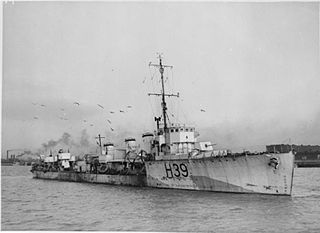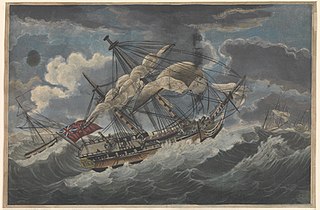Related Research Articles
Enterprise may refer to:
Fifteen ships of the Royal Navy have been named HMS Enterprise while another was planned:

During the 18th and 19th centuries, a sloop-of-war was a warship of the British Royal Navy with a single gun deck that carried up to 18 guns. The rating system of the Royal Navy covered all vessels with 20 or more guns; thus, the term encompassed all unrated warships, including gun-brigs and cutters. In technical terms, even the more specialised bomb vessels and fire ships were classed by the Royal Navy as sloops-of-war, and in practice these were employed in the role of a sloop-of-war when not carrying out their specialised functions.

A screw sloop is a propeller-driven sloop-of-war. They were popularized in the mid-19th century, during the introduction of the steam engine and the transition of fleets to this new technology.

A number of ships Royal Navy have been named HMS Echo, after the Echo of Greek mythology
Eleven ships of the Royal Navy have been named HMS Scorpion after the carnivorous arthropod, or the scorpion, a ballistic weapon in use in the Roman army:

HMS Whimbrel is the last surviving Royal Navy warship to have been present at the Surrender of Japan in World War II. She was a sloop of the Black Swan-class, laid down on 31 October 1941 to the pennant number of U29 at the famed yards of Yarrow Shipbuilders, Scotstoun, Glasgow.

The Aubrietia-class sloops were a class of twelve sloops built under the Emergency War Programme for the Royal Navy in World War I as part of the larger Flower class. They were also referred to as the "cabbage class", or "herbaceous borders". The Flowers were the first ships designed as minesweepers.
Three Royal Navy ships have been called HMS Egeria:

The 24 class was a class of minesweeping sloops. They were derived from the preceding Flower-class sloop, but designed to appear double-ended. Twenty-four ships to this design were ordered between December 1916 and April 1917 under the Emergency War Programme for the Royal Navy in World War I, although two of them were cancelled before launch. All were named after famous racehorses, but they were not named Racehorse class as the Admiralty realised that this could easily be confused in communications with the Racecourse class of paddle minesweepers, and they officially became the 24 class.

The Cruizer class was an 18-gun class of brig-sloops of the Royal Navy. Brig-sloops were the same as ship-sloops except for their rigging. A ship-sloop was rigged with three masts whereas a brig-sloop was rigged as a brig with only a fore mast and a main mast.

The QF 4 inch Mk XVI gun was the standard British Commonwealth naval anti-aircraft and dual-purpose gun of World War II.

The Egret-class sloops were a three ship class of a long-range escort vessels used in the Second World War by the Royal Navy. They were an enlarged version of the Bittern class with an extra twin 4-inch gun mounting. They were fitted with Denny Brown stabilisers and the Fuze Keeping Clock anti-aircraft fire control system.

An Escort Group consisted of several small warships organized and trained to operate together protecting trade convoys. Escort groups were a World War II tactical innovation in anti-submarine warfare by the Royal Navy to combat the threat of the Kriegsmarine's "wolfpack" tactics. Early escort groups often contained destroyers, sloops, naval trawlers and, later, corvettes of differing specifications lacking the ability to maneuver together as a flotilla of similar warships, but rigorously trained in anti-submarine tactics to use teamwork emphasizing the unique sensors, weapons, speed, and turning radius of each ship. The development of these 'escort groups' proved an effective means of defending shipping convoys through the Battle of the Atlantic.

The Bridgewater-class sloop was a class composed of two sloops built for the Royal Navy, HMS Bridgewater and HMS Sandwich. The ships were part of the Royal Navy's 1927 Build Programme as replacements for the Flower-class sloop.

HMS Calypso was a Royal Navy Echo-class ship-sloop. She was built at Deptford between 1781 and 1783, launched on 27 September 1783 and first commissioned on 1 December 1783 for service off Northern Ireland and Scotland. She served in the North Sea, Atlantic, and the West Indies. Calypso sank whilst acting as a convoy escort on 30 July 1803 after colliding with a West Indiaman merchant ship during a violent storm.
The Snake-class ship-sloops were a class of four Royal Navy sloops-of-war built in the late 18th and early 19th centuries. Though ships of the class were designed with the hull of a brig, their defining feature of a ship-rig changed their classification to that of a ship-sloop rather than that of a brig-sloop.
Sir Edward Hunt (c.1730–1787) was a British shipbuilder and designer who rose to be Surveyor of the Navy.

Sir William Rule was a shipbuilder and designer to the Royal Navy who rose to be Surveyor of the Navy.
References
- 1 2 "British Echo-Class". threedecks.org. Cy Harrison. Retrieved 22 August 2024.